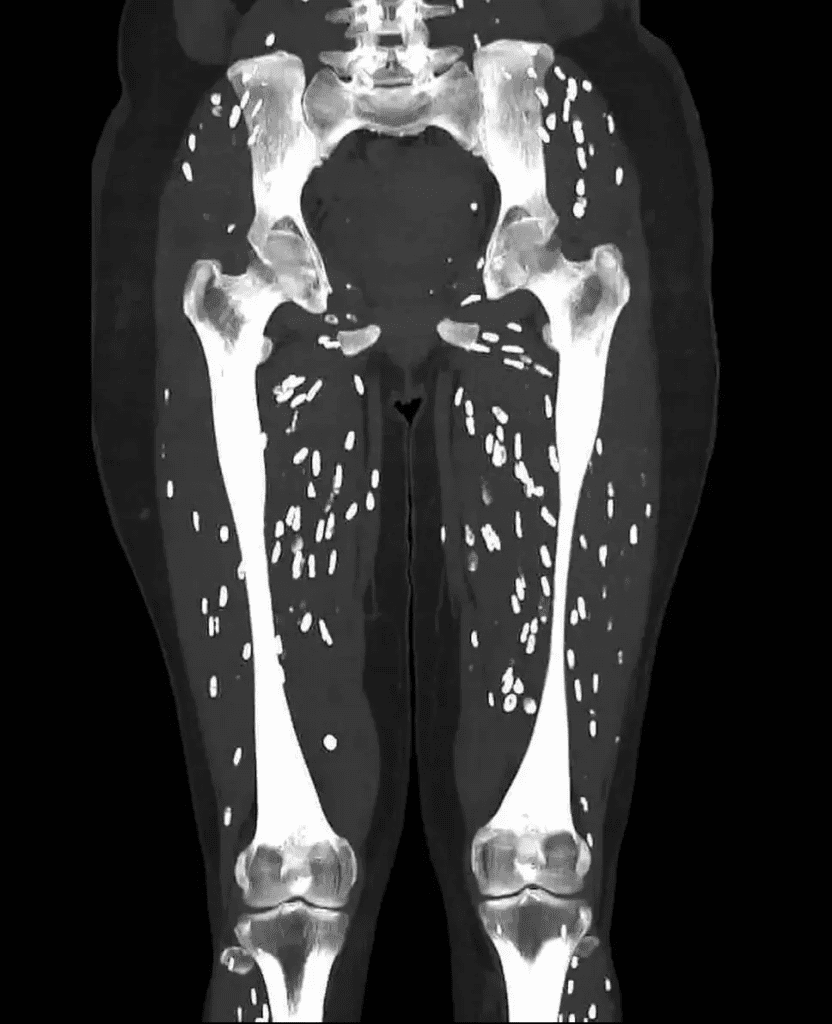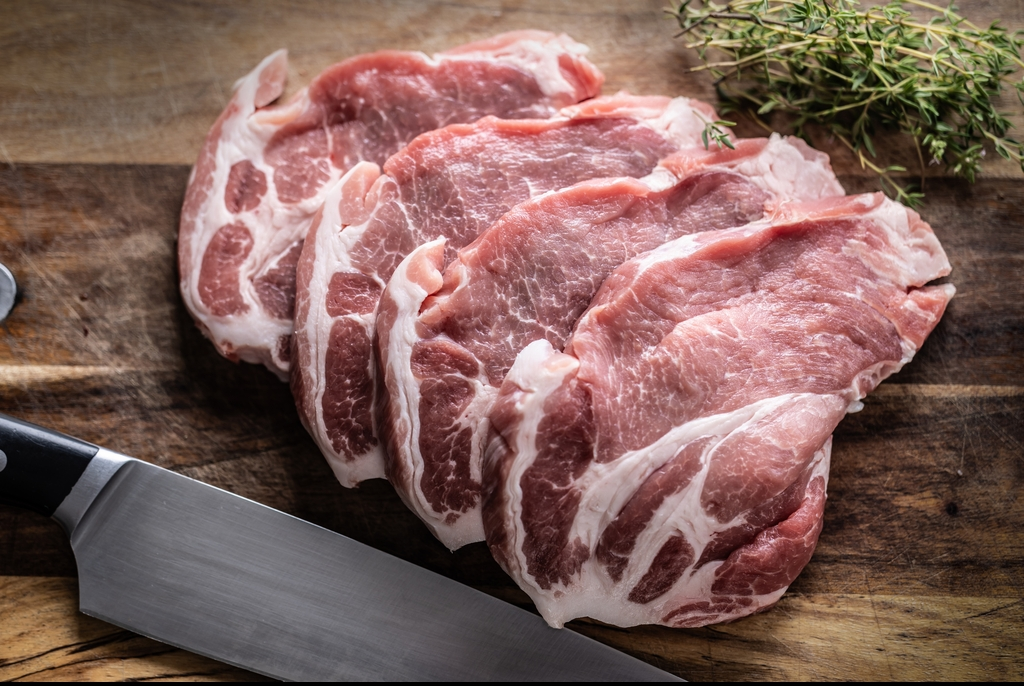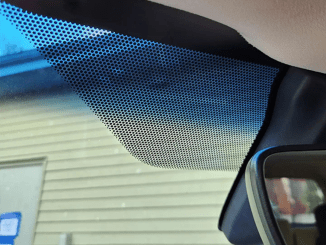Eating undercooked pork can lead to more than just an upset stomach—it can result in a life-threatening parasitic infection. This was highlighted in a recent viral post by Dr. Sam Ghali, who shared a CT scan that left his followers shocked and concerned. The scan revealed a severe case of cysticercosis, a condition caused by the pork tapeworm, Taenia solium. This article delves into the details of cysticercosis, its causes, symptoms, and why it’s essential to ensure your pork is thoroughly cooked.

What Is Cysticercosis?
Cysticercosis is a parasitic infection that occurs when a person ingests the eggs of the pork tapeworm. These eggs can enter the body through contaminated food or water or due to poor hygiene practices, such as not washing hands after using the bathroom. Once inside the body, the eggs hatch into larvae, which then penetrate the intestinal wall and enter the bloodstream. From there, they can spread to various parts of the body, including the muscles, eyes, and most dangerously, the brain.
The Shocking CT Scan: A Real-Life Warning
Dr. Sam Ghali’s post on social media showcased one of the most alarming CT scans he had ever seen. The scan, which displayed numerous white blotches all over a female patient’s legs, was later identified as a severe case of cysticercosis. These blotches, known as “rice grain calcifications,” are the result of the body’s inflammatory response to the larvae. As the body fights off the infection, it kills the larvae, leading to the formation of these calcifications.
This scan serves as a stark reminder of the dangers associated with consuming undercooked pork and the severe consequences of contracting a parasitic infection like cysticercosis.
How Does the Infection Spread?
The pork tapeworm infection typically spreads through the ingestion of tapeworm eggs. These eggs are often found in contaminated food or water, especially in areas with poor sanitation. Additionally, the infection can spread through direct contact with a person who has the tapeworm, particularly if they don’t practice proper hygiene.
The tapeworm’s lifecycle begins when a person consumes undercooked pork containing the larvae. Once inside the human digestive system, the larvae can grow into adult tapeworms, laying eggs that can lead to cysticercosis if ingested.
Symptoms of Cysticercosis: What to Watch Out For
The symptoms of cysticercosis can vary depending on where the larvae migrate and form cysts in the body. Common symptoms include:
- Muscle Pain and Swelling: When the larvae invade the muscles, it can cause pain, swelling, and the formation of lumps under the skin.
- Vision Problems: If the larvae reach the eyes, they can cause vision disturbances or even blindness.
- Neurological Symptoms: The most severe form of the infection, neurocysticercosis, occurs when the larvae reach the brain. This can lead to headaches, seizures, confusion, and other serious neurological problems. In extreme cases, it can be fatal.
The Dangers of Neurocysticercosis
Here’s one of the craziest CT scans I’ve ever seen
— Sam Ghali, M.D. (@EM_RESUS) August 25, 2024
What’s the diagnosis? pic.twitter.com/DSJmPfCy9L
Neurocysticercosis is the most dangerous form of cysticercosis, as it involves the brain and central nervous system. According to the World Health Organization (WHO), Taenia solium is responsible for approximately 30% of epilepsy cases in areas where the parasite is endemic. In some high-risk communities, the parasite is linked to as many as 70% of epilepsy cases. The condition can cause a range of neurological symptoms, from mild headaches to severe seizures and even death.
Treatment Options for Cysticercosis
Treatment for cysticercosis depends on the location and severity of the infection. In many cases, the infection is benign and may not require treatment. However, in more severe cases, particularly those involving the nervous system, treatment options include:
- Antiparasitic Medications: Drugs such as albendazole or praziquantel are commonly used to kill the tapeworm larvae.
- Corticosteroids: These are often prescribed to reduce inflammation and manage symptoms, particularly in cases of neurocysticercosis.
- Antiepileptic Drugs: For patients experiencing seizures, antiepileptic medications may be necessary to control these episodes.
- Surgery: In some cases, surgical intervention may be required to remove cysts that are causing significant problems.
Prevention: The Best Defense Against Cysticercosis

Preventing cysticercosis involves several key practices:
- Cook Pork Thoroughly: Always ensure that pork is cooked to an internal temperature of at least 145°F (63°C) to kill any tapeworm eggs or larvae.
- Practice Good Hygiene: Wash your hands thoroughly with soap and water after using the bathroom, before preparing food, and before eating.
- Avoid Contaminated Food and Water: Be cautious when traveling to areas with poor sanitation. Drink bottled water, avoid raw vegetables, and eat only well-cooked food.
- Properly Dispose of Human Waste: In areas where the parasite is endemic, it’s crucial to dispose of human waste safely to prevent the spread of infection.
The Importance of Awareness
Dr. Ghali’s viral post serves as a stark reminder of the importance of food safety and hygiene. Cysticercosis may be rare in developed countries, but it’s still a risk, especially for those who consume undercooked pork or travel to areas where the parasite is common. By understanding the risks and taking appropriate precautions, you can protect yourself and your loved ones from this potentially deadly infection.
Conclusion
The shocking CT scan shared by Dr. Sam Ghali is more than just a viral sensation—it’s a wake-up call for everyone to take food safety seriously. Whether you’re at home or traveling abroad, always ensure your pork is cooked thoroughly, practice good hygiene, and be aware of the symptoms of cysticercosis. Remember, a little caution can go a long way in keeping you and your family safe from this dangerous parasitic infection.


